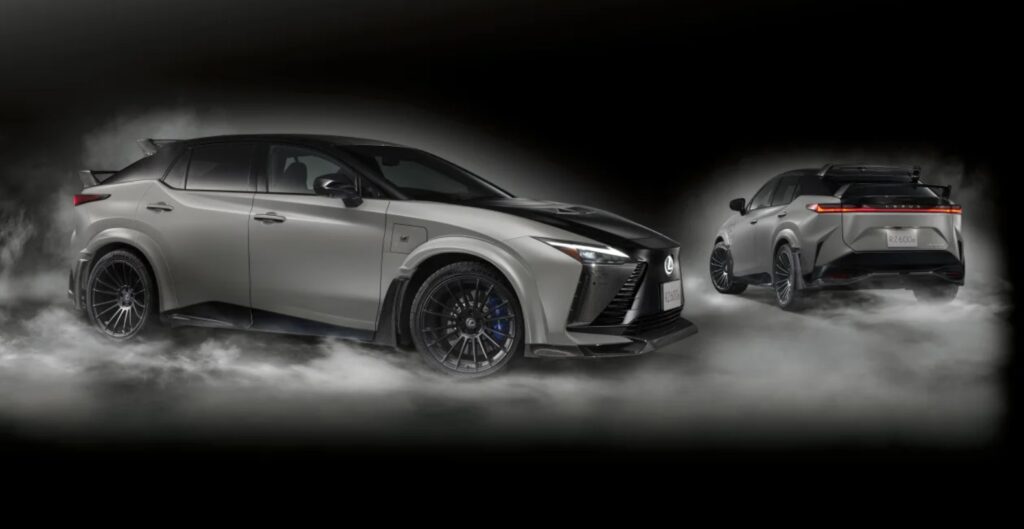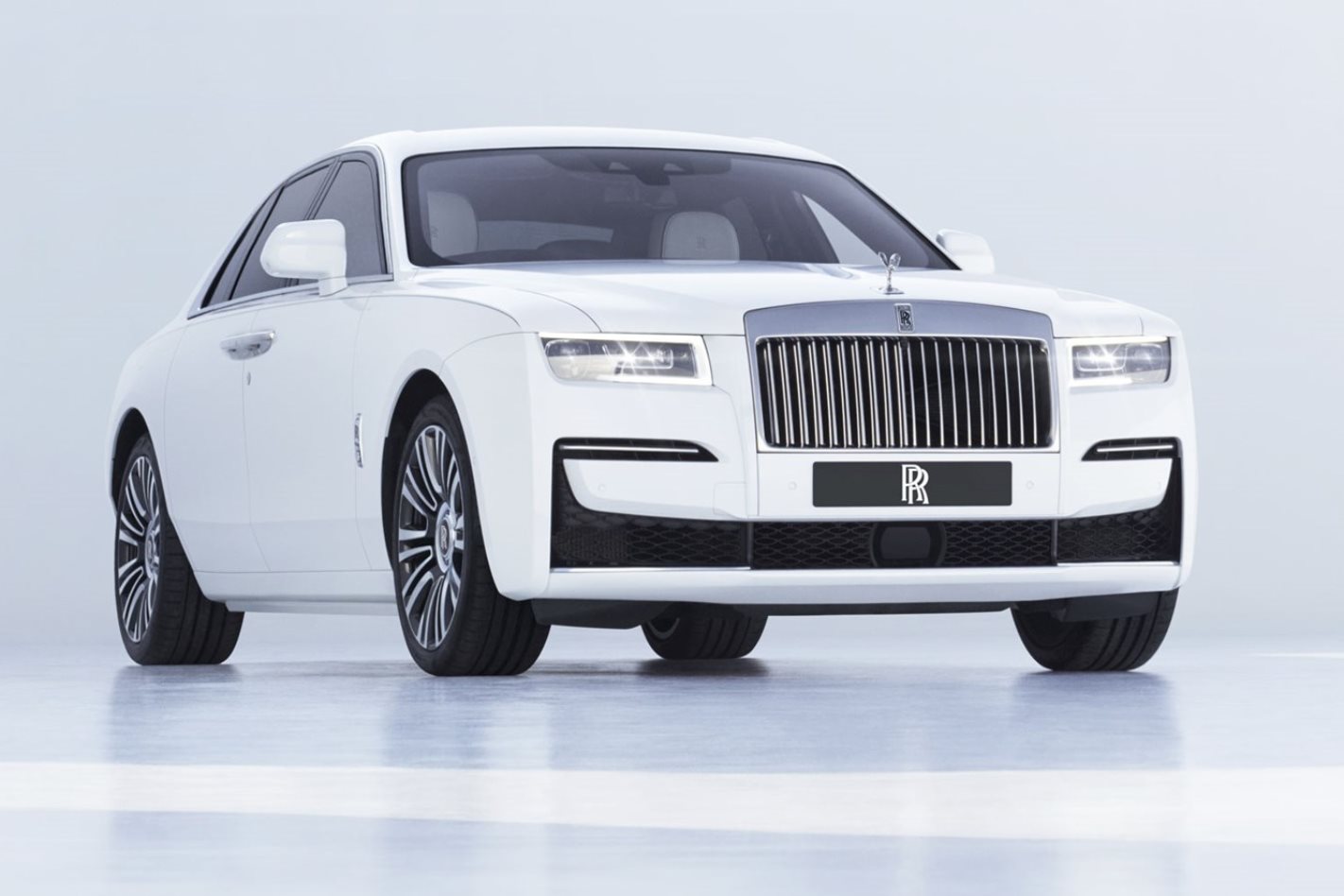
You’re looking at the all-new Rolls-Royce Ghost, a fresh ‘minimalist’ take on the baby Roller formula. As you’d expect it’s the most technically advanced car from the Goodwood brand so far, featuring a mixture of new tech alongside some familiar Rolls staples.
Highlights include new illuminated styling elements, plus a world-first ‘Planar’ suspension design, which works together with the all-wheel drive, all-wheel steering and 420kW twin-turbo V12 to promise an even more reassuringly adept passenger and driving experience. Many Ghost customers actually drive their cars, rather than ride in them.
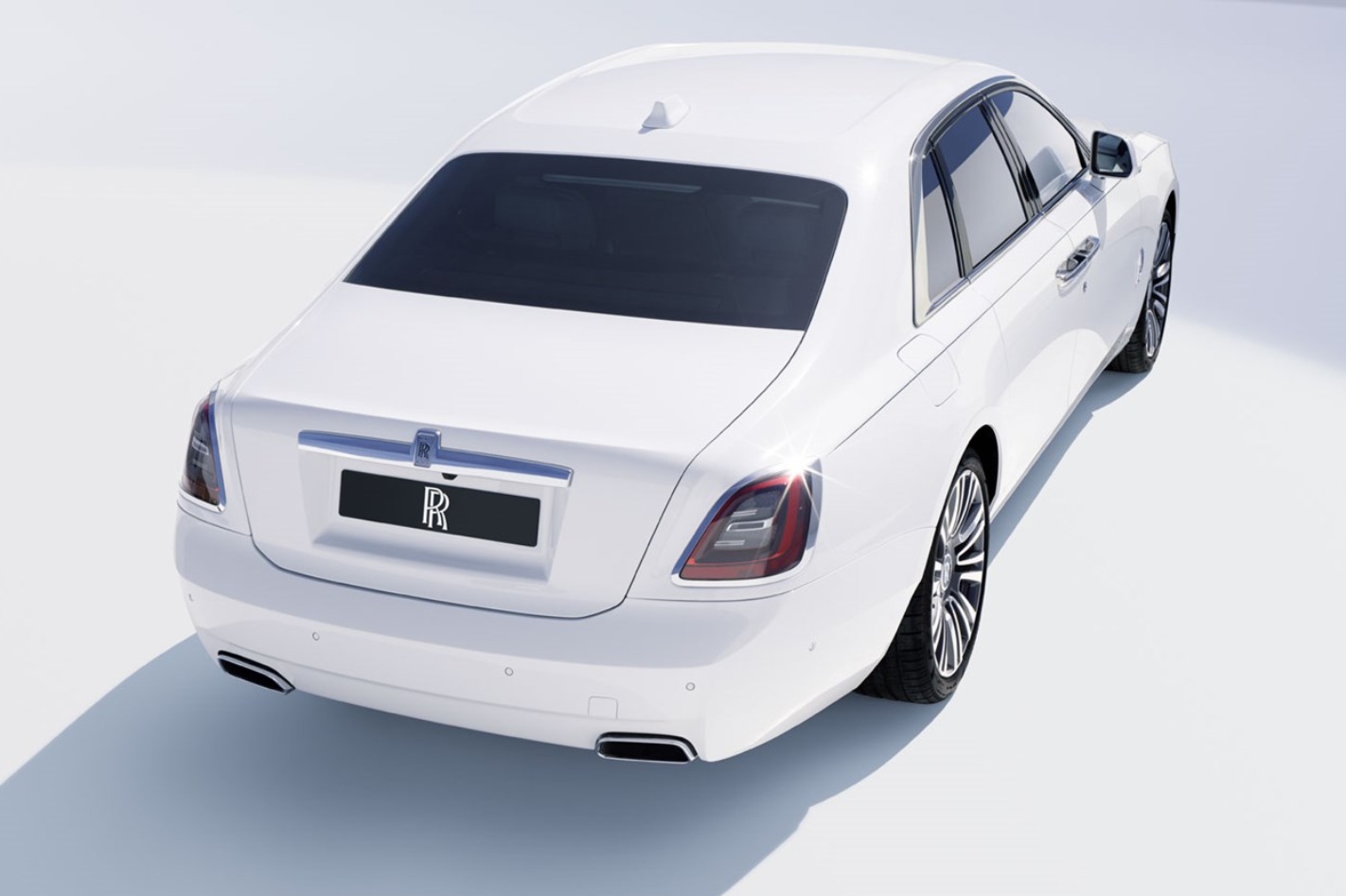
As for how new it is, Rolls-Royce boss Torsten Muller-Otvos says the only components carried over from the previous Ghost are the Spirit of Ecstasy on the bonnet and the umbrellas in the doors.
Post Opulence, apparently
Rolls-Royce claims to have taken a totally new direction with the Ghost’s design, and it’s calling it ‘Post Opulence.’ After feedback from its elite customer base, Goodwood decided to make the next Ghost more minimalist and less overtly detailed – if that’s possible.
At the same time, just like their Crewe-based counterparts at Bentley, Rolls-Royce’s designers have had to keep the updates subtle in order to avoid alienating everyone that’s already heavily into the brand.
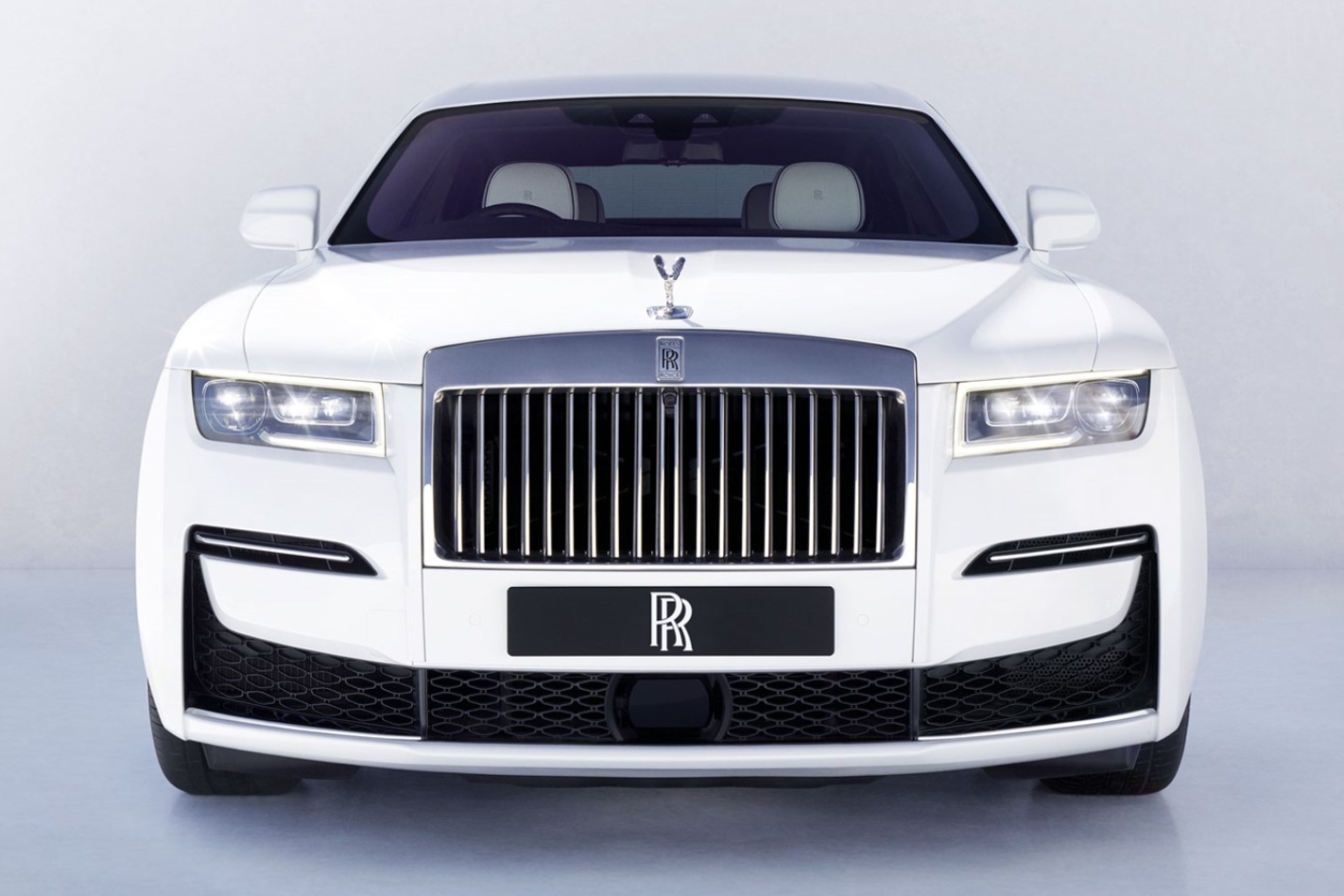
In practice, that means Post Opulence is all about cleaner lines – both inside and outside the car. Look at pictures of the new and old Ghost and the changes are small but numerous. Shut lines have been cleaned up, the overall flow evokes shapes throughout the brand’s history, and the aesthetics are more cohesive.
Still, Post Opulence doesn’t mean basic; in some areas, the new Ghost is even more visually impressive than the last. For instance, Rolls-Royce has taken a leaf out of parent company BMW’s playbook and illuminated the ‘Pantheon’ grille.
Some 20 LEDs were needed to create the downlit, architectural appearance and, to perfect the effect, Rolls engineers had to brush the backs of the fins for just the right amount of reflection.
And inside?
Getting into the Ghost now involves doors that open and close electrically if you want them to, and the car’s dashboard is now a design centrepiece; one that took two years and 10,000 hours to create.
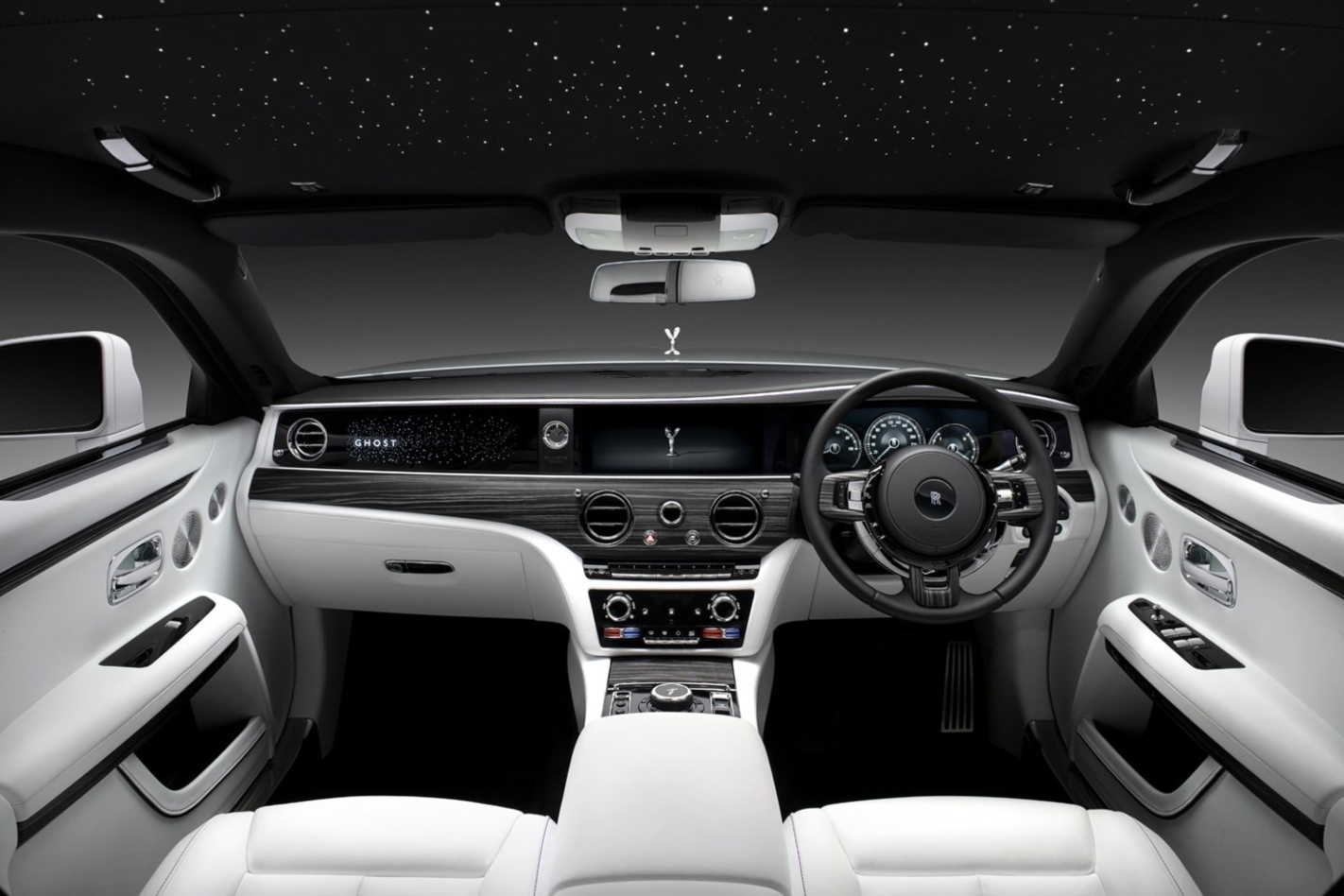
Located on the passenger side – like the Phantom – the interior features a glowing Ghost nameplate, surrounded by 850 pinpricks of light. The star effect – which mimics that of the headliner – is achieved by way of 152 LEDs, and several layers of light guides and other materials that match the cabin.
As you’d expect, the installation is eye-catching when engaged, but totally invisible when it isn’t. If it’s anything like the version offered with other Rolls models, it’ll be eye-wateringly expensive.
What’s underneath?
The new 2021 Ghost uses the same ‘proprietary’ Rolls-Royce scaleable platform architecture as the latest Phantom launched in 2017 and the Cullinan SUV revealed a year later.
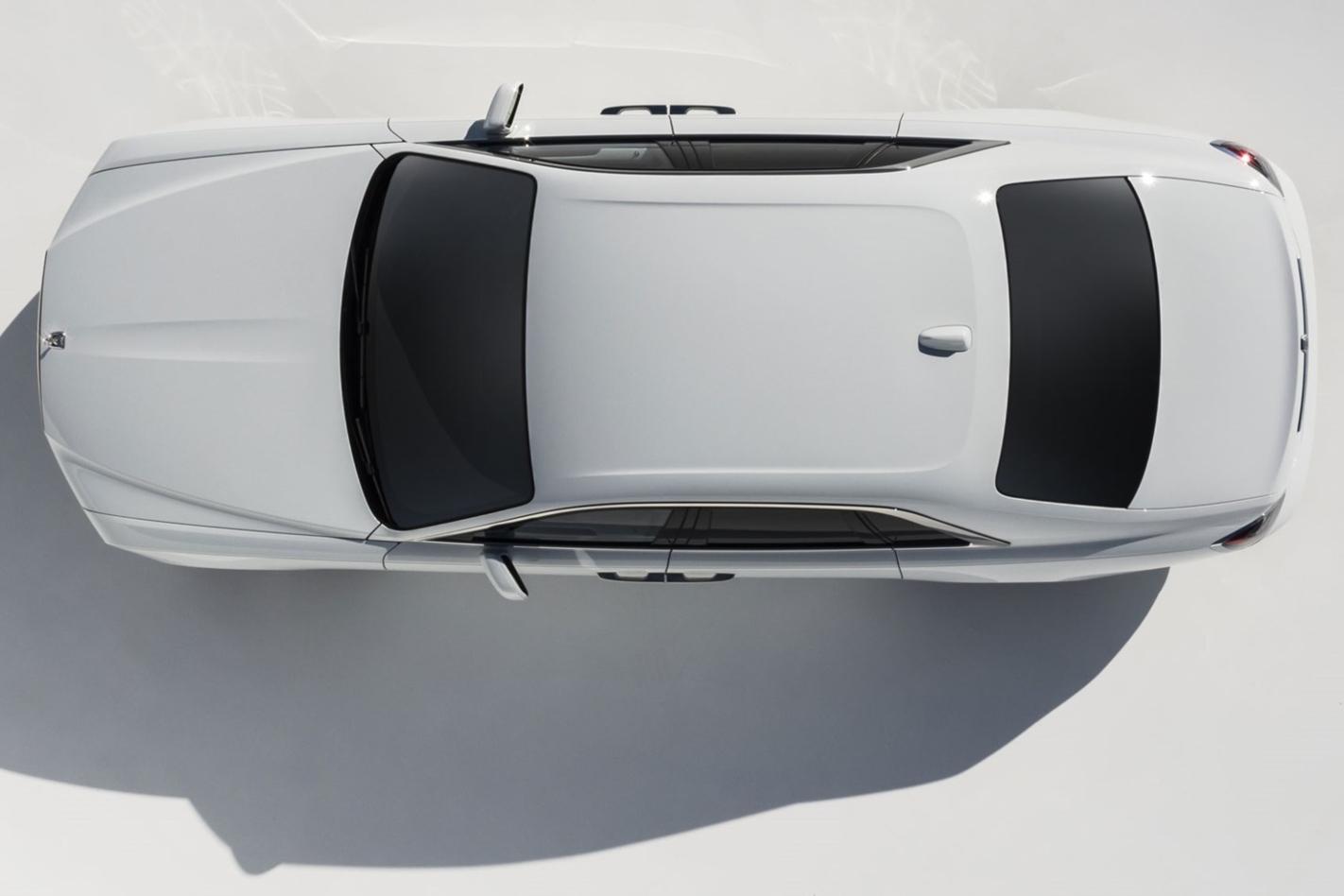
In the Ghost, that platform is crowned by a 6.8-litre V12 twin-turbo powerplant, capable of 420kW and 850Nm. Maximum torque is available at an effortless 1600rpm and Goodwood’s engineers have also worked on getting the ride as quiet as possible.
Nailing the acoustics of the new car has been a priority, and features such as a double-skinned bulkhead section and 100kg of sound absorbing material were all introduced to the make the interior quieter. At the same time, the new Ghost benefits from double-glazed windows and tyres lined with sound-insulating foam.
The detail Rolls-Royce has gone into here almost beggars belief, including air-conditioning ducting, seat frames, boot space and tail-shaft diameter fettled for acoustic perfection. Apparently, experiments with a totally silent passenger compartment were found ‘disorientating’, so a soft, single tone ‘whisper’ has been tuned into the vehicle instead.
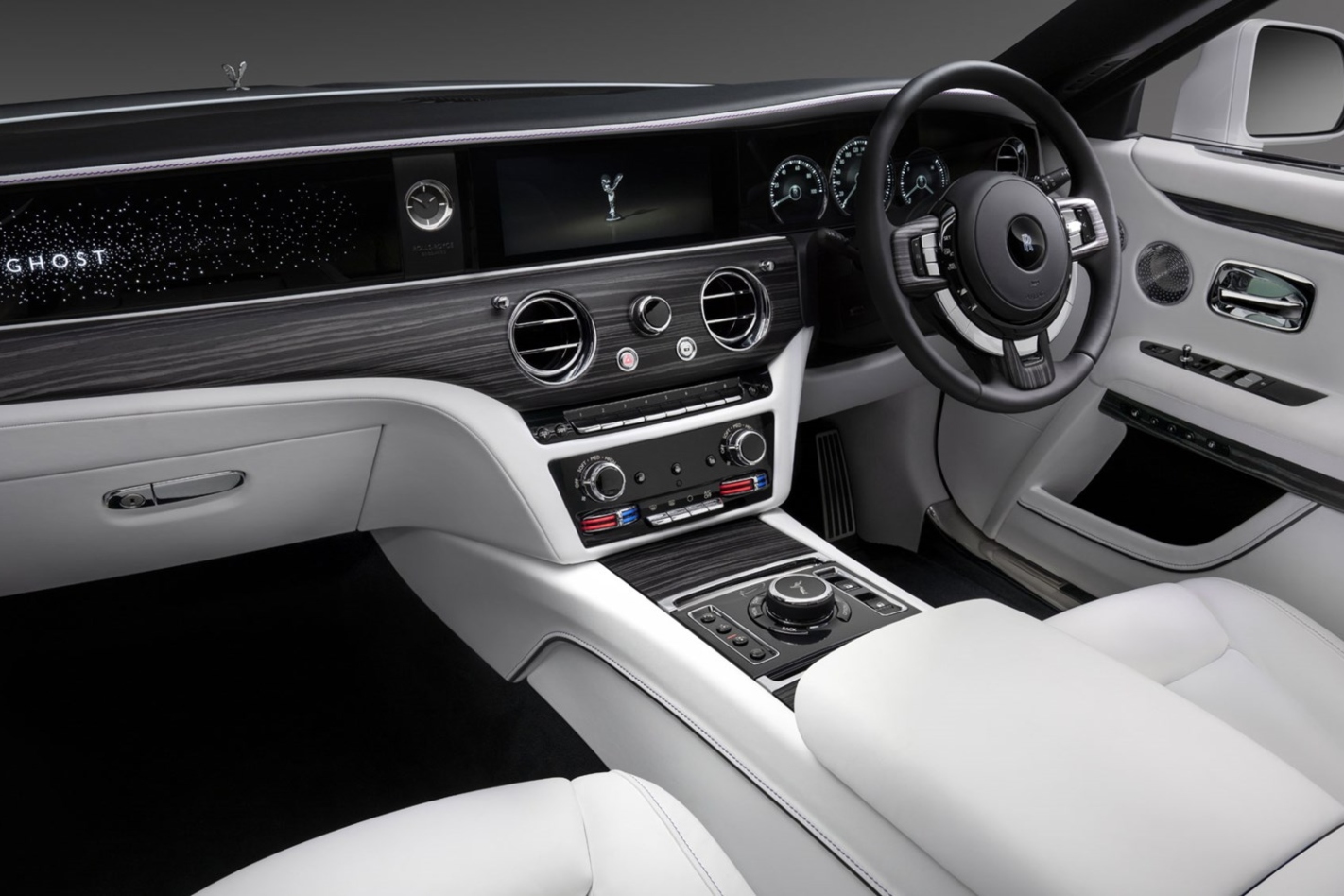
Extensive use of aluminium – including all of the visible superstructure and the entire door assemblies – also helps keep the noise down, proving stiffer and less resonant than the equivalent in steel.
The mechanics – including that new Planar suspension
The Ghost’s V12 is placed just aft of the front-axle for perfect 50/50 balance – no mean feat when the car is 5546mm (89mm longer than before) and it includes several other technologies that suggest it’ll be able to handle gracefully rather than nautically.
At 1978mm wide, the new Ghost is also 30mm broader than before, all the better for accommodating the new all-wheel drive and all-wheel steering systems, not to mention the ‘redesigned Planar Suspension System’.
This is a totally new development, 10 years in the making, named after a geometric plane that is completely flat and level and improves the fabled Rolls ‘magic carpet ride’ by combining a surface-scanning camera system called Flagbearer, the Satellite Aided Transmission and some clever new hardware.
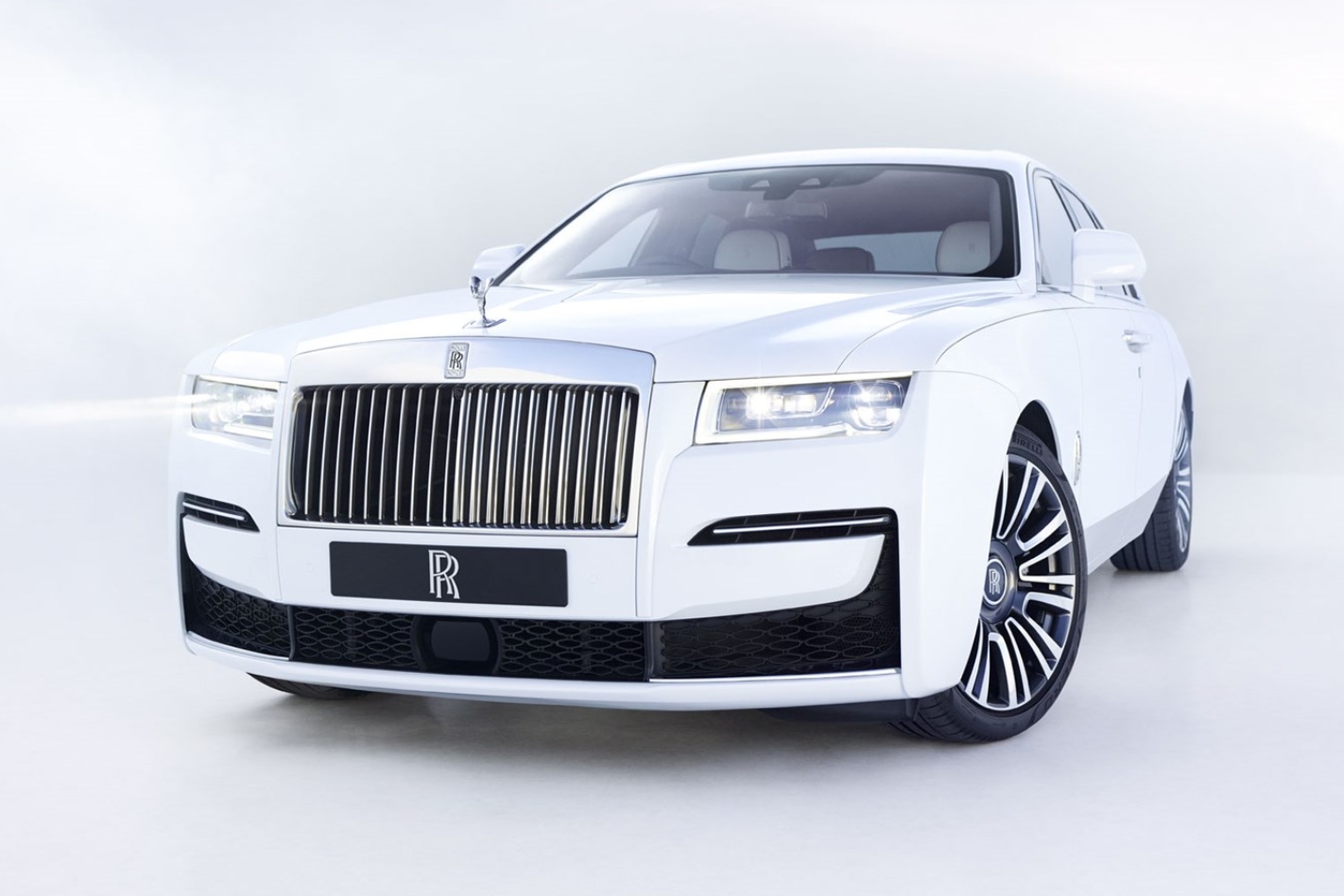
While the cameras and the gearbox trickery – which uses the GPS data to make sure the car is in the appropriate gear – aren’t groundbreaking, the Upper Wishbone Damper unit is a new and uniquely Rolls-Royce development, never before seen on a production vehicle. This sits above the front suspension assembly and works in harmony with the electronically controlled dampers and the self-levelling air springs at the nose of the car.
At the rear there’s a more familiar five-link arrangement with air springs and electronic dampers, but now boosted by rear-wheel steering. Add-in the all-wheel drive system, self-drying brakes and state-of-the-art stability control, and Rolls-Royce promises customers will find “the motor car is reacting as one to changes in surfaces or grip while also maintaining a spirited, dynamic personality.”
All of these features are coordinated via new Planar software. It sounds fearsomely complicated, but also intriguing. Rolls-Royce is calling the result “unprecedented levels of ride comfort and control for a motor car.” We can’t wait to try it.
Anything else we need to know?
Perhaps unsurprisingly, the new Ghost is packed with technology, including a combination of LED and laser headlighting, capable of illuminating up to 600m of road ahead, the highest-resolution head-up display on the market, and all the latest active driving assistance you can probably name – though at no point does Rolls-Royce refer to self-driving or autonomous capability. Presumably that’s what the chauffeur is for.
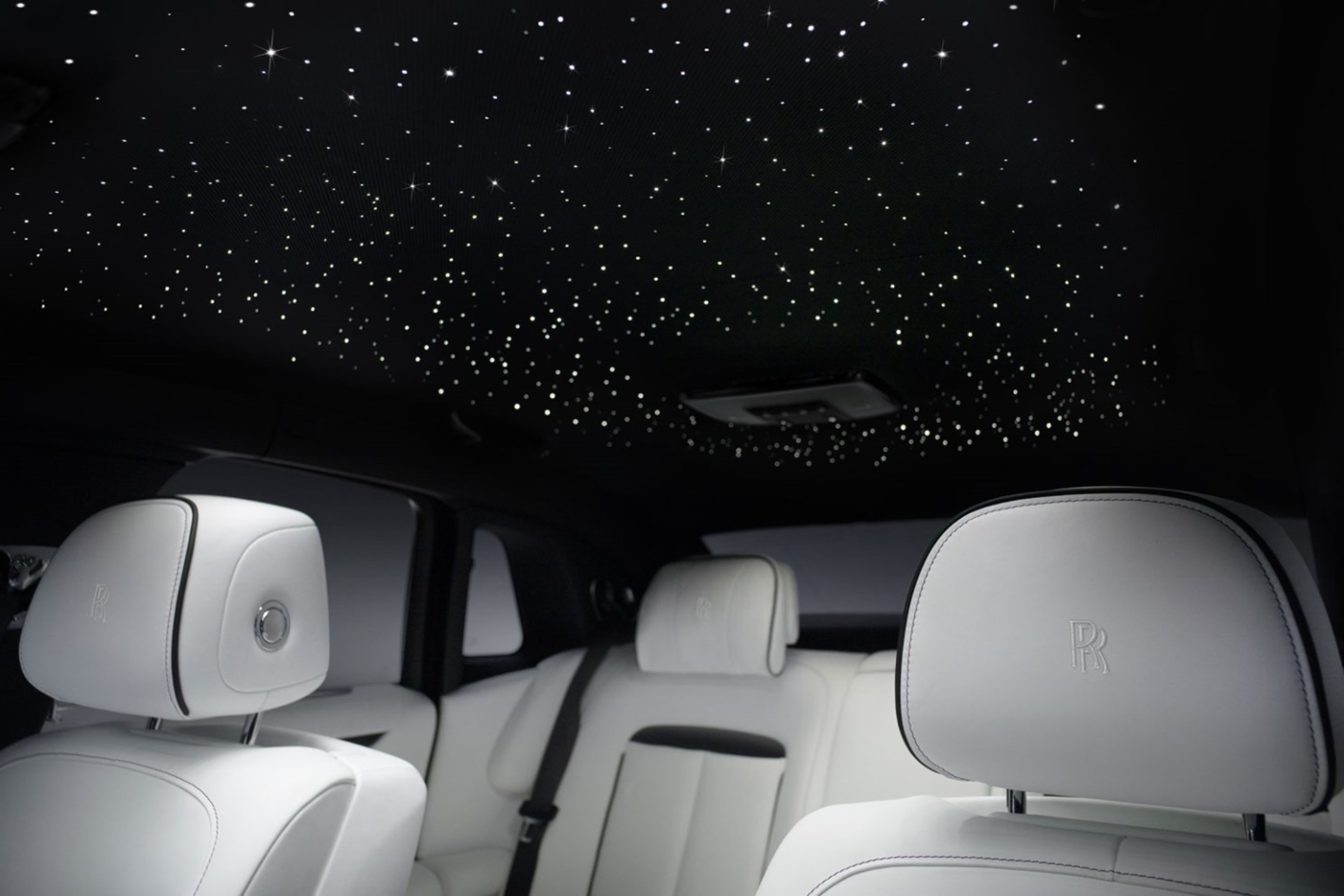
Obviously there’s a monster 1300W Bespoke Audio sound system available, which includes the use of ‘exciter’ speakers alongside traditional cone items. An example of this is the Starlight Headliner, which is transformed into one giant speaker by the process.
And the cost?
As the old expression goes – if you have to ask, you probably can’t afford it. Pricing for Australia is yet to be confirmed but the previous model started at just under $600,000, which was a relative bargain compared with the rest of the Rolls-Royce range. Don’t expect the new generation to be cheaper.

